Diptera.info :: Identification queries :: Diptera (adults)
Who is here? 1 guest(s)
|
081_ID? (Siphona ingerae)
|
|
| Mucha Fero |
Posted on 04-04-2011 17:02
|
|
Member Location: Posts: 8177 Joined: 27.09.10 |
Please identify 081_ID flies. Slovak Republic, Malá Fatra-Terchová. Thank you very much for your help. Best regards! Fote date: 02.04.2011.   
Edited by Mucha Fero on 18-04-2011 18:10 |
|
|
|
| neprisikiski |
Posted on 04-04-2011 17:22
|
|
Member Location: Lithuania Posts: 876 Joined: 23.02.09 |
It looks like Siphona ingeriae, Tachinidae.
Erikas |
|
|
|
| Mucha Fero |
Posted on 04-04-2011 18:25
|
|
Member Location: Posts: 8177 Joined: 27.09.10 |
neprisikiski wrote: It looks like Siphona ingeriae, Tachinidae. Erikas thank you very much. |
|
|
|
| Zeegers |
Posted on 05-04-2011 09:56
|
|
Member Location: Soest, NL Posts: 18518 Joined: 21.07.04 |
Well spotted, Erikas ! Theo |
|
|
|
| ChrisR |
Posted on 05-04-2011 09:59
|
|
Administrator Location: Reading, England Posts: 7699 Joined: 12.07.04 |
Which features make it S.ingeriae? Long tarsal claws? 
Edited by ChrisR on 05-04-2011 10:00 Manager of the UK Species Inventory in the Angela Marmont Centre for UK Biodiversity at the Natural History Museum, London. |
| neprisikiski |
Posted on 05-04-2011 12:13
|
|
Member Location: Lithuania Posts: 876 Joined: 23.02.09 |
I see several characters, including long tarsal claws, distinctly vittate thorax, entirely dark abdomen, partly darkened all femora and others. I cannot see anterior preapical seta on the second femur, that characterizes this species, but this could be the reaseon of bad focus. By the way, it is the most abundunt species of the maculata group!
Erikas |
|
|
|
| ChrisR |
Posted on 05-04-2011 13:14
|
|
Administrator Location: Reading, England Posts: 7699 Joined: 12.07.04 |
Very interesting - here it is incredibly rare. I seem to only catch S.geniculata, cristata or maculata here 
Manager of the UK Species Inventory in the Angela Marmont Centre for UK Biodiversity at the Natural History Museum, London. |
| Zeegers |
Posted on 05-04-2011 13:18
|
|
Member Location: Soest, NL Posts: 18518 Joined: 21.07.04 |
'the most abundant species' !? That explains a lot ! It is incredibly rare here as well. So don't worry, Chris. Theo |
|
|
|
| ChrisR |
Posted on 05-04-2011 13:22
|
|
Administrator Location: Reading, England Posts: 7699 Joined: 12.07.04 |
Yes, one of the biggest problems with the British Siphona is that collectors are highly unlikely to see anything other than the 3 commonest species and geniculata is by far the commonest species of them all. So improving the key and making it easier to spot the rarer species (including plenty of good secondary features) is something I am very keen to do 
Manager of the UK Species Inventory in the Angela Marmont Centre for UK Biodiversity at the Natural History Museum, London. |
| Kahis |
Posted on 05-04-2011 14:08
|
|
Member Location: Helsinki, Finland Posts: 1999 Joined: 02.09.04 |
ChrisR wrote: Very interesting - here it is incredibly rare. I seem to only catch S.geniculata, cristata or maculata here  I have to side with neprisikiski on this one: Siphona ingerae is not particularly rare in Finland, in fact it is among the more common Siphonas during its mid-spring flight time. No comments on the identification of the Siphona in the pictures from me, it's been a while since I last looked at these very frustrating tachinids. I usually just give up after a while and send my material to specialists to be determined, sigh. With 15 species in my reference collection I am still unable to sort them out with any confidence (except a few species, S. ingerae included). Kahis |
| neprisikiski |
Posted on 05-04-2011 14:25
|
|
Member Location: Lithuania Posts: 876 Joined: 23.02.09 |
At least in my Malaise traps it is much more common than Siphona maculata itself. It is not the first time, when I hear about rarity of common species their in the West. In one Malaise trap from a suitable place that was exposed all season I usually obtain about 10 species of this genus, the most abundant are Siphona pauciseta, S. setosa, but S. genuculata is very common only in the western part of the country.
Erikas |
|
|
|
| ChrisR |
Posted on 05-04-2011 14:38
|
|
Administrator Location: Reading, England Posts: 7699 Joined: 12.07.04 |
I'd love to see more of the rare species - I am sure the familiarity would make it a little easier to split them. My problem here is that the rare stuff is so very rare in reference collections that I am never sure whether the material has been identified correctly  EDIT: I just checked ... I have seen precisely zero ingerae 
Edited by ChrisR on 05-04-2011 14:45 Manager of the UK Species Inventory in the Angela Marmont Centre for UK Biodiversity at the Natural History Museum, London. |
| Zeegers |
Posted on 05-04-2011 15:45
|
|
Member Location: Soest, NL Posts: 18518 Joined: 21.07.04 |
Here in the west, we are terrible in well developed quiet grasslands, which is the reasons that we are preforming so poor on Dexia, Prosena, Gonia (to a less extent) and species with similar habitat preference. This was not so bad some 50 years ago, I once pubished (in dutch) on the matter. I think Siphona ingerae might fit in this picture (?), since it is a grassland species (?) Theo |
|
|
|
| Kahis |
Posted on 05-04-2011 19:38
|
|
Member Location: Helsinki, Finland Posts: 1999 Joined: 02.09.04 |
Zeegers wrote: Here in the west, we are terrible in well developed quiet grasslands, which is the reasons that we are preforming so poor on Dexia, Prosena, Gonia (to a less extent) and species with similar habitat preference. This was not so bad some 50 years ago, I once pubished (in dutch) on the matter. I think Siphona ingerae might fit in this picture (?), since it is a grassland species (?) Just checked my own specimens of S. ingerae and it isn't very demanding here. Maybe the common theme is small openings in forests (but then again, that describes pretty much every place in Finland that isn't not IN a forest  ). The localities include the lawn of my parents summer house, marsh/bog meadows under a power line surrounded by full grown spruce forest, a dry meadow/house garden, a small riverside meadow and the margin of a small wheat field in mixed forest. Nothing fancy at all. ). The localities include the lawn of my parents summer house, marsh/bog meadows under a power line surrounded by full grown spruce forest, a dry meadow/house garden, a small riverside meadow and the margin of a small wheat field in mixed forest. Nothing fancy at all.
Kahis |
| ChrisR |
Posted on 05-04-2011 20:17
|
|
Administrator Location: Reading, England Posts: 7699 Joined: 12.07.04 |
Grrr 
Manager of the UK Species Inventory in the Angela Marmont Centre for UK Biodiversity at the Natural History Museum, London. |
| Jump to Forum: |


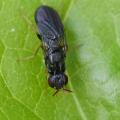



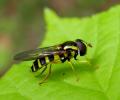
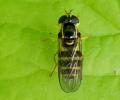

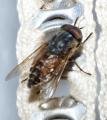
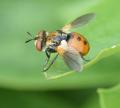



 but don't see the image in the post.
but don't see the image in the post.